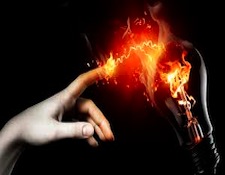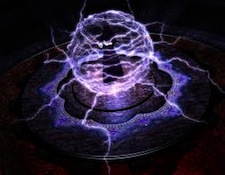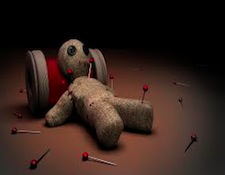It’s the time of year for saving money!

Many a long year ago at a CES in what was probably the late 1980s, (Sorry, but I don’t recall the exact year), John Bedini was showing his Bedini electronics at the Riviera Hotel in a suite shared with Brian Cheney’s VMPS loudspeakers.
A demonstration system had been set-up with both a turntable and a CD player, either of which could be played through a Bedini preamp into the biggest Bedini stereo amplifier, to drive a pair of huge multi-driver VMPS speakers at what was always loud, and was often (as VMPS speakers were so good at) world-destroying volume.
To complement his talk-of-the-audiophile-community line-level “Bedini-boxes”, claimed to improve component-to-component signal transmission, Bedini had recently introduced and was demonstrating his mysterious Bedini-boxes for loudspeakers. Two of these were used for each stereo channel, with one box connected to the output terminals of the amplifier and another box hooked to the input terminals of the speaker with the “speaker cables” running between them, but attached only to the two Bedini boxes, and not to either the amplifier or the speaker directly. Because Bedini said that “the signal from the amplifier was not actually carried by the speaker cables, but “detoured through hyperspace” to get from the amplifier to the speakers, with the cables serving only as a “road map to tell the signal where to enter hyperspace and where to come out again”, the “cables” weren’t actually cables at all, but were single strands (one positive and one negative for each channel) of Radio Shack 30 AWG gauge Kynar-insulated hookup wire.
All went well and sounded great for much of the Show, until one afternoon, when someone – whether a dealer, a distributor, or simply a “sneak-in” audiophile, I never knew – said to Bedini that the setup couldn’t possibly work; that Bedini’s “hyperspace” explanation was bullsh*t; that the 30 gauge wires could never carry enough power to drive the system as loud as it was being played; that there must be other REAL cables and probably another amplifier hidden to actually make the sound that was being heard; and that, all-in-all, Bedini was a liar, a fraud, and a con artist.

Perhaps still chastened from the previous year, when he had gotten into a fist fight with Mike Petroff (Petroff Labs speakers) when he had shared a CES suite with him, Bedini didn’t take a poke at the guy (Let’s call him the “heckler”) who was saying these things, but simply (there may have been a bet, too) offered to PROVE to him that everything that he was hearing was real and that the entire demonstration was on the up-and-up.
To do that, the source was stopped, with the preamp left at its last (HIGH) volume setting; the (solid-state) amplifier was turned-off, and the heckler was asked to disconnect the Bedini-boxes at both the amplifier and the speakers; to physically remove the boxes to somewhere out of the way; and to re-connect the 30 gauge “cables” directly to the amplifier and speaker terminals as appropriate.
Then the source was started back up and the amplifier was turned on (Remember that solid-state equipment starts “instantly”) and the music came back on LOUD, but only for a couple of seconds before the insulation on the tiny 30 gauge wires burned off; the wires, themselves, turned red and then yellow-hot and finally melted; and the sound was cut-off, leaving the air filled with smoke and bad smells from the burning insulation and the hotel’s burnt carpeting, into which four thin lines had been charred where the wires had been and had burned away.

Whether in hyperspace or not, the Bedini boxes had obviously been doing SOMETHING, and that something had obviously stopped when they were taken out of the signal path, which proved that the heckler had been right in at least one thing: 30 gauge wires COULDN’T carry the power to drive the speakers at the levels they were being played at.
Bedini’s magic boxes were a source of mystery (and fully “potted” so that they couldn’t be opened and reverse-engineered), but they weren’t John Bedini’s only claim to fame. Besides them and some quite outstandingly good conventional audio gear, he also had an excellent and consistently well-reviewed amplifier that used “optical” transistors that seemed to be nothing more than ordinary transistors that had had their tops ground off, been filled with “pixie dust”, and then been potted closed again. Also, following on the work of Nicola Tesla, of whom Bedini was a great admirer, Bedini came up with any number of other toys and goodies, including a “free” power system that, according to Ken Rottner (one of Bedini’s great pals and admirers) was capable of running as many as 200 100 Watt light bulbs (20,000 Watts, total) indefinitely off a single 12 Volt car battery WITHOUT EVER DISCHARGING THE BATTERY! (As Bedini was said to have explained it, the battery was simply there as a sort of “catalyst” to start “energy from the fabric of space” flowing and to keep it flowing for as long as desired. [Another hyperspace road map, perhaps?]) For more examples of Bedini’s work, including monopole motors and Tesla chargers, see http://www.energyscienceforum.com/members/john_bedini.html
So now, finally, what’s the point of all this? Arthur C. Clarke, the British science fiction writer, wrote, as his Third Law of Prediction that “Any sufficiently advanced technology is indistinguishable from magic”. Does that also mean that it will be indistinguishable from voodoo? John Bedini isn’t the only audio designer PROVEN to have accomplished some truly amazing things and to have done some other things that are not yet proven and are regularly attacked as “voodoo”. What about them? Maybe the best thing would be to simply remember Clarke’s other two Laws:
When a distinguished but elderly scientist states that something is possible, he is almost certainly right. When he states that something is impossible, he is very probably wrong.
The only way of discovering the limits of the possible is to venture a little way past them into the impossible.
Happy hi-fi!





